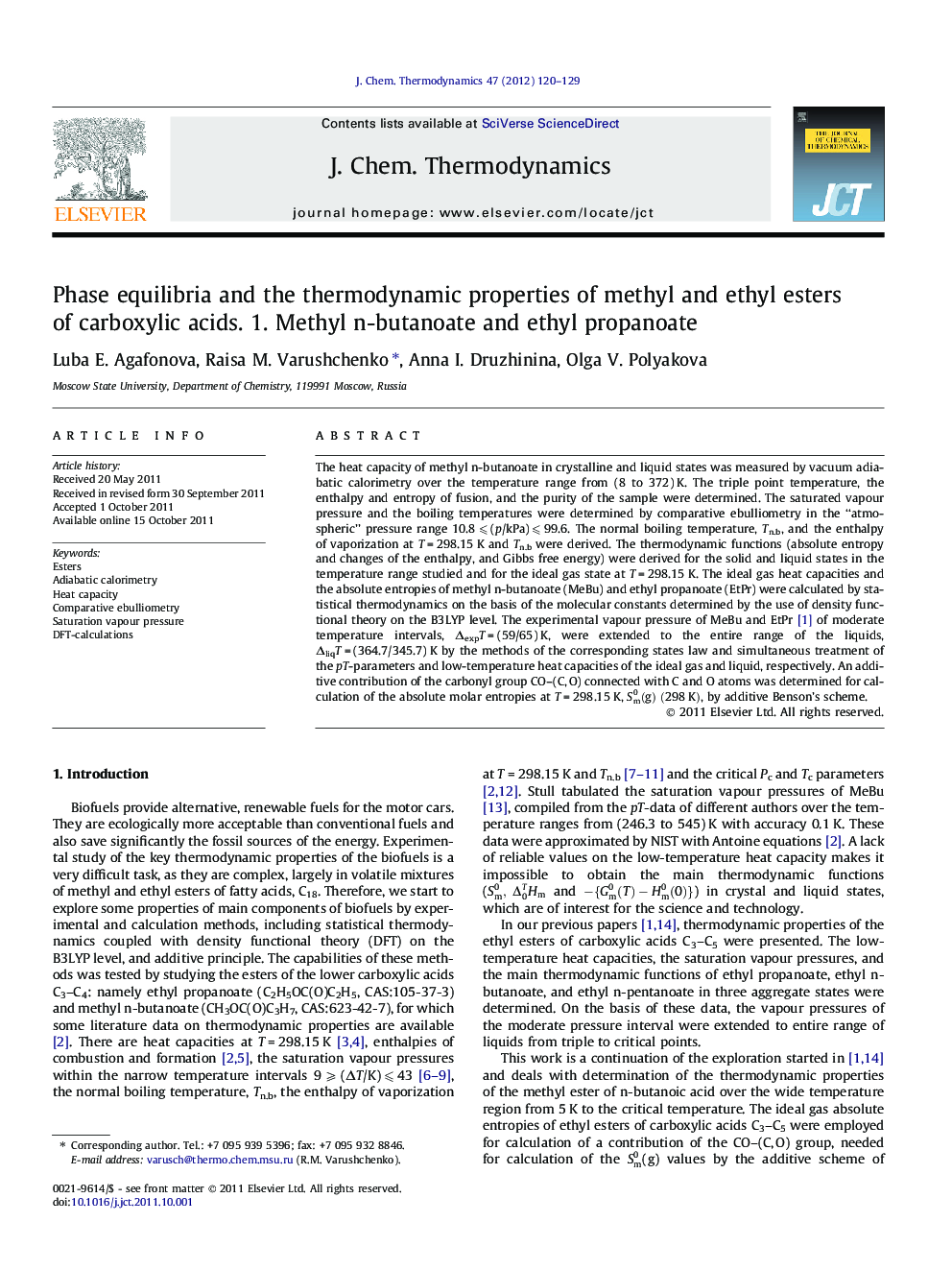| Article ID | Journal | Published Year | Pages | File Type |
|---|---|---|---|---|
| 216186 | The Journal of Chemical Thermodynamics | 2012 | 10 Pages |
The heat capacity of methyl n-butanoate in crystalline and liquid states was measured by vacuum adiabatic calorimetry over the temperature range from (8 to 372) K. The triple point temperature, the enthalpy and entropy of fusion, and the purity of the sample were determined. The saturated vapour pressure and the boiling temperatures were determined by comparative ebulliometry in the “atmospheric” pressure range 10.8 ⩽ (p/kPa) ⩽ 99.6. The normal boiling temperature, Tn.b, and the enthalpy of vaporization at T = 298.15 K and Tn.b were derived. The thermodynamic functions (absolute entropy and changes of the enthalpy, and Gibbs free energy) were derived for the solid and liquid states in the temperature range studied and for the ideal gas state at T = 298.15 K. The ideal gas heat capacities and the absolute entropies of methyl n-butanoate (MeBu) and ethyl propanoate (EtPr) were calculated by statistical thermodynamics on the basis of the molecular constants determined by the use of density functional theory on the B3LYP level. The experimental vapour pressure of MeBu and EtPr [1] of moderate temperature intervals, ΔexpT = (59/65) K, were extended to the entire range of the liquids, ΔliqT = (364.7/345.7) K by the methods of the corresponding states law and simultaneous treatment of the pT-parameters and low-temperature heat capacities of the ideal gas and liquid, respectively. An additive contribution of the carbonyl group CO–(C, O) connected with C and O atoms was determined for calculation of the absolute molar entropies at T = 298.15 K, Sm0(g)(298K), by additive Benson’s scheme.
► Heat capacities, fusion properties of CH3OC(O)C3H7 measured by adiabatic calorimetry. ► The temperature dependence of vapour pressure determined by comparative ebulliometry. ► The thermodynamic functions derived from experiment and calculated by DFT method. ► Extending vapour pressure of moderate interval to entire region of liquid. ► An increment of the entropy of carbonyl group was defined from experimental data.
